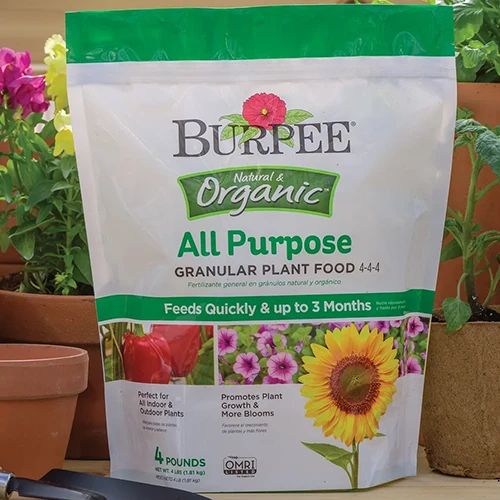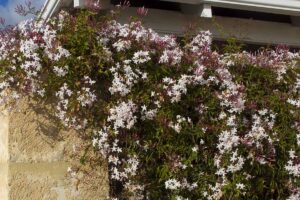Sporting brightly-colored flowers that look like a tropical bird mid-flap, bird of paradise certainly lives up to its name.
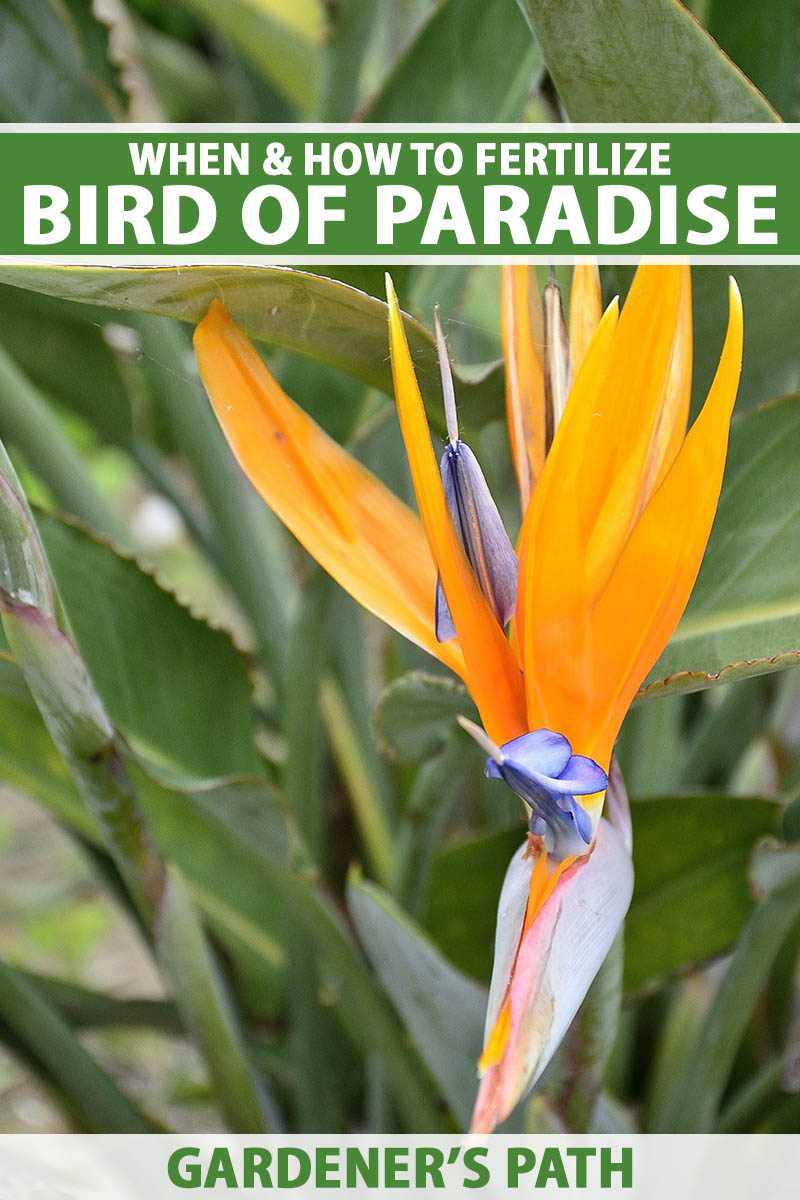
We link to vendors to help you find relevant products. If you buy from one of our links, we may earn a commission.
It’s important to fertilize such a gorgeous plant correctly.
Otherwise, it’ll put out bird-esque blooms that won’t look at all paradisiacal… and you’ll just be left with a bird of “a less-than-idyllic place.” Not as attractive, nor as catchy.
But a properly fertilized Strelitzia? *Chef’s kiss*… delectable.
This guide provides the necessary know-how to supply a bird of paradise with the nutrition it needs.
Plus, we’ll throw in some powerful reasons for feeding your plants, should a debilitating case of apathy strike while you’re completing your gardening chores.
Here’s everything we’ll cover up ahead:
What You’ll Learn
Why Fertilize a Bird of Paradise?
Maintaining a beautiful garden requires a fair amount of hard work. And to feel fulfilled by that labor, it’s important to know the purpose behind everything we do.
Let’s take a look at the reasons for feeding these lush tropical plants.
Aesthetics
The attractive flowers and foliage of a Strelitzia come at a high metabolic cost.
Besides meeting their sunlight and water requirements, a plethora of macro- and micronutrients are needed to optimally produce and maintain all that growth.
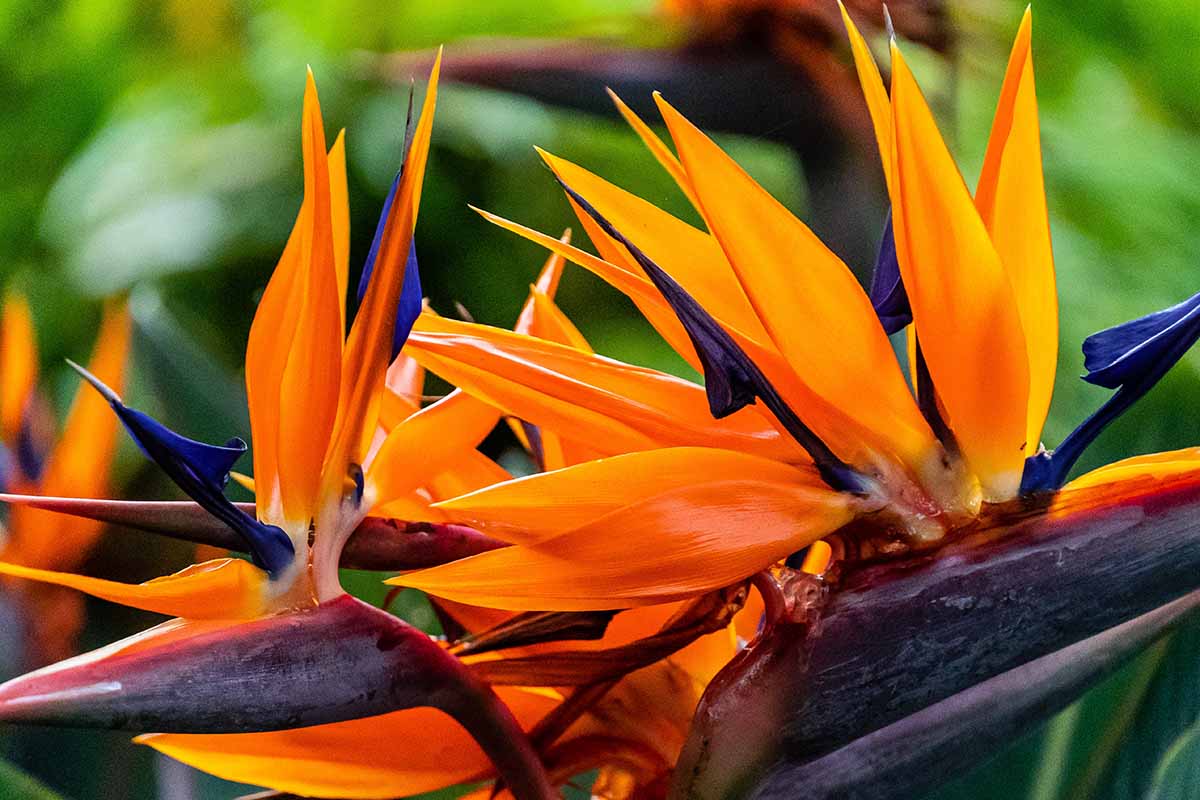
Without the necessary nutrition, deficiency symptoms show up as splitting, curling, browning, and chlorotic leaves, as well as shoddy-looking blooms.
None of which make for an attractive garden specimen.
Vigor
Besides a diminished appearance, malnutrition can cause stunted development.
At the cellular level, plants need various essential components such as proteins, chlorophyll, and ribozymes to carry out the molecular processes of living.
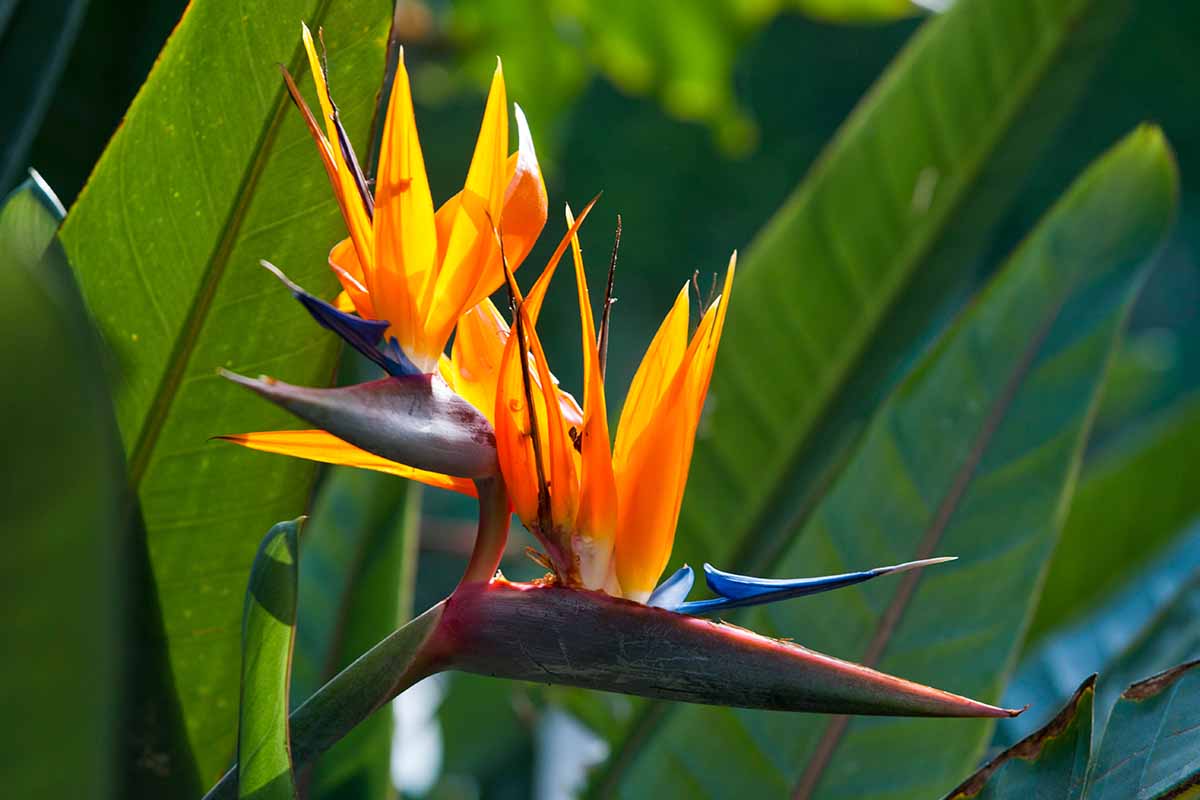
Take these building blocks away, and cell function is impaired. And while we can’t actually see impaired cells, we do notice the big-picture result: slowed and reduced growth.
Health
Along with keeping up appearances and ensuring vigorous growth, proper nutrition enables a plant to protect itself from pests and pathogens.
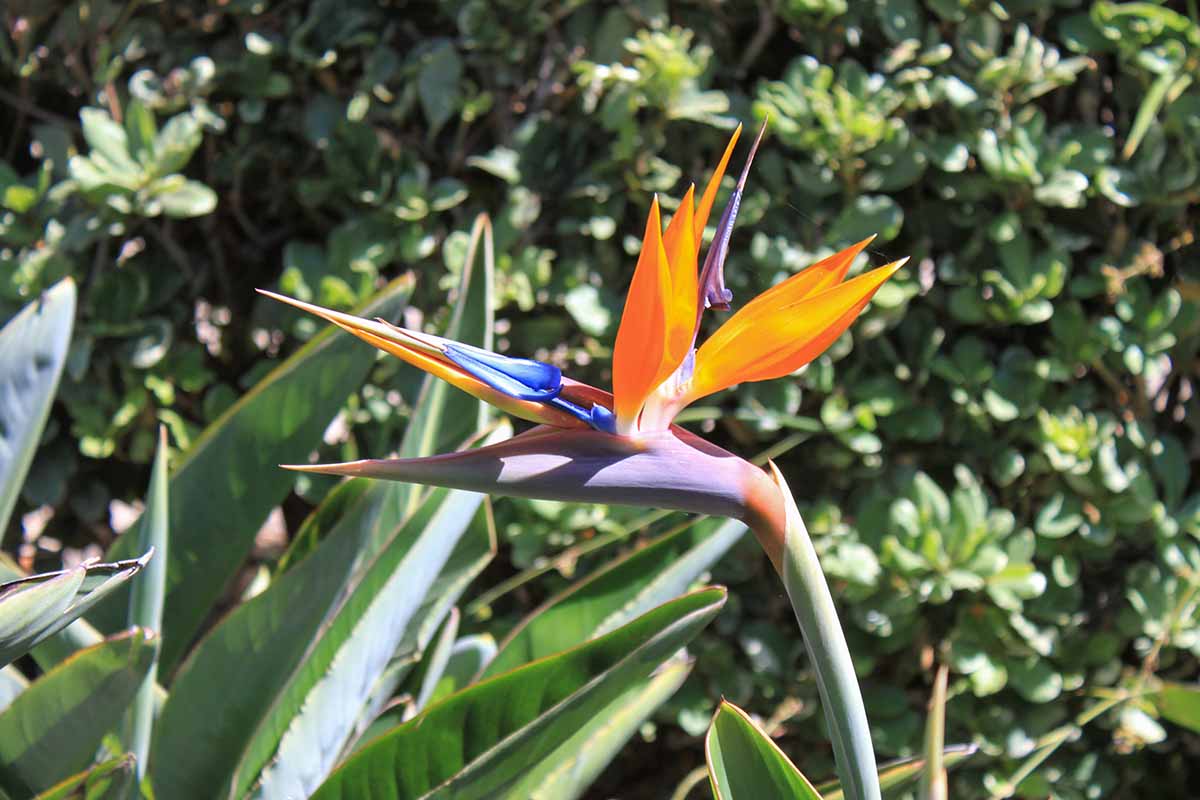
Stressors such as malnutrition add up in a plant, and each additional unit of stress makes the organism less capable of coping with infestation or infection.
But a properly-fed plant? Now that’s an organism that can better handle health issues – or even avoid them altogether.
What You’ll Need
Feeling caught up in the fervor of fertilizing? Here are the essentials:
Humus
Humus is what remains after plants and animals decompose.
Also known as organic material, humus improves many aspects of soil: nutrition, water-holding capacity, structure, and cation exchange capacity.
Cation exchange capacity (CEC) may be a new or confusing concept for folks, even if they’ve been in the gardening game for awhile.
Since no one’s too smart for a CEC refresher, let’s rehash the concept real quick.
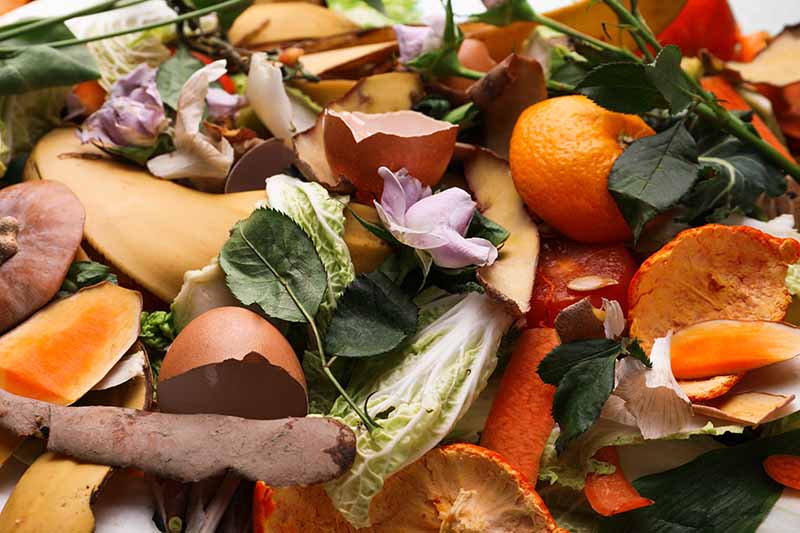
CEC describes the capability of a soil to provide nutrition to plants, rather than the amount of nutrition already present in said soil. Despite sounding alike, these are two totally different things.
Positively-charged plant nutrients such as calcium and magnesium – also known as cations – are attracted to negatively-charged particles in the soil with a high CEC, such as clay or compost.
As roots grow into the soil, they absorb nutrients that are stuck to soil particles.
In soil with high quantities of humus, there’s a higher amount of mobile nutrients to absorb than in soils void of organic matter.
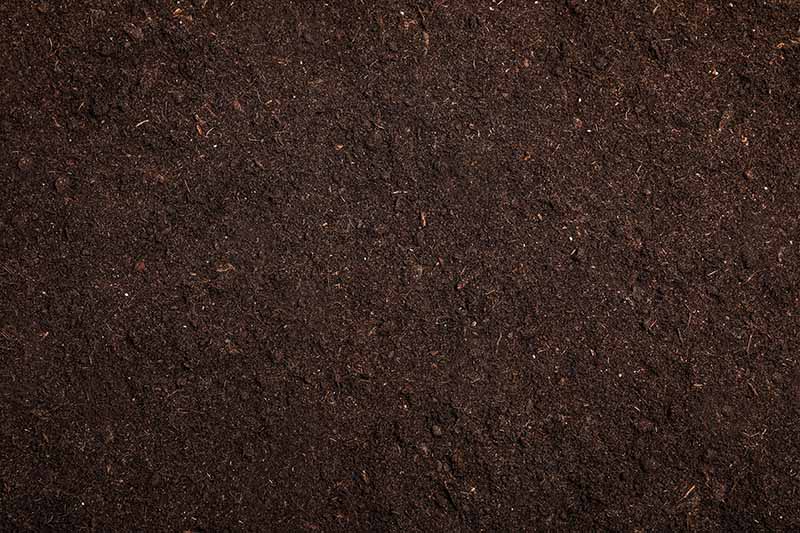
CEC doesn’t address negatively charged ions – or anions – such as nitrates, since they aren’t cations.
Soil particles don’t readily attract anions, which are prone to washout via irrigation and rainfall.
In the realm of essential plant nutrients, this is less likely for phosphorus since it’s not readily soluble… but I digress.
Types of humus fit for adding to your soil include peat moss, compost, and well-rotted manure.
Fertilizer
For specific nutritional deficiencies that need resolving, fertilizers are quite useful. When selecting one, you have two avenues to choose from: organic or synthetic.
Organic fertilizers consist of naturally occurring materials such as kelp meal, bat guano, or bone meal.
A positive quality of organics is their tendency to provide secondary and/or trace nutrients that tend to be present in those ingredients, helping to deliver balanced nutrition overall.

Synthetic fertilizers utilize mined or manufactured compounds such as ammonium nitrate or potassium sulfate.
Such compounds offer readily bioavailable forms of nitrogen, phosphorus, and potassium, the chief macronutrients essential to plant life, but are often void of secondary and trace nutrients like magnesium and sulfur.
And imbalanced nutrition can lead to deficiency or toxicity.
That, plus the tendency of synthetics to disrupt populations of helpful soil microorganisms, makes organic fertilizers the ones many home gardeners opt to go with, particularly when it’s convenient to choose them.
Soil Test
If you’re not aware of what’s going on with your soil, then you won’t know the details of its nutritional status that may or may not need changing.
For insight on your soil, professional or DIY soil test kits are both solid choices.
Utilizing expert sources such as local university agricultural extensions or professional services will be quite helpful, and this will build connections that you can call upon for future gardening queries.

For a DIY soil test, try this kit from Luster Leaf that reveals a soil’s pH, nitrogen, phosphorus, and potassium levels, which is available on Amazon.
When and How to Feed Your Plants
Prior to transplanting your Strelitzia, work a couple inches of humus into the soil around the planting site.
To do this, break up the soil, add the humus, and work it all together. This will start things off on the right foot in terms of fertility.
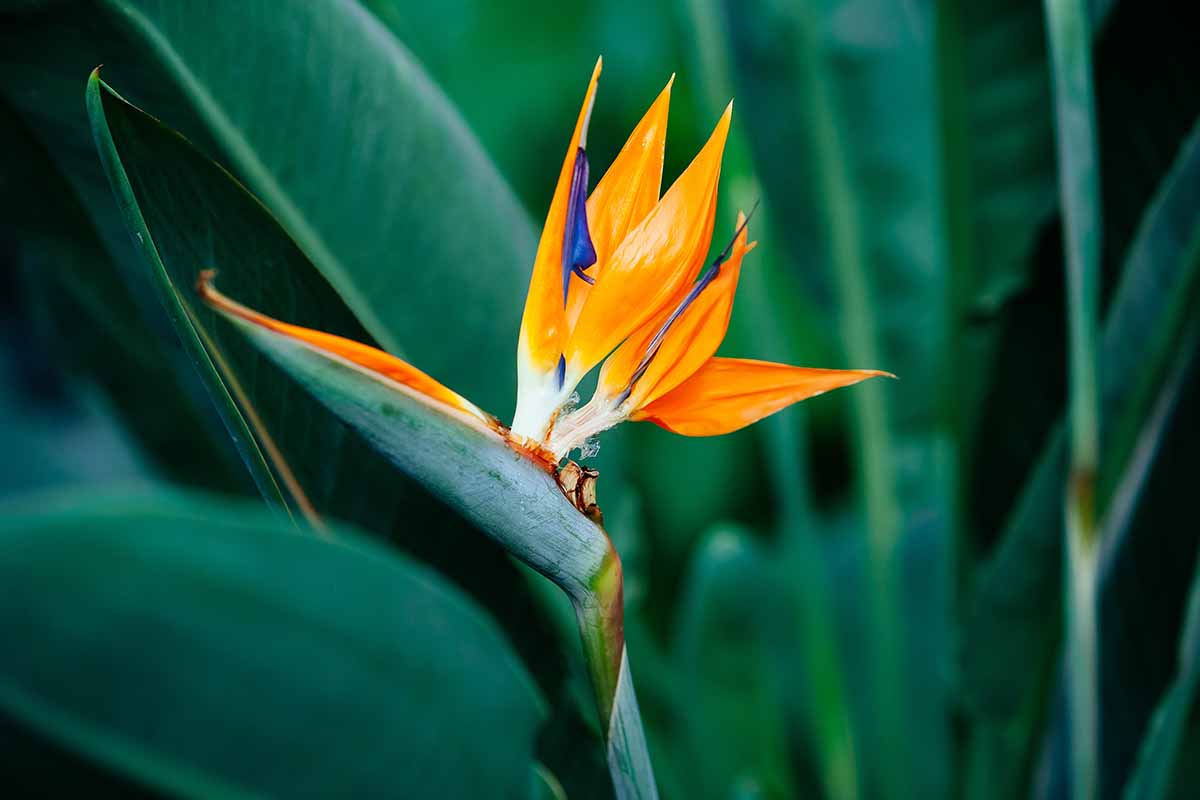
For fertilizing an established bird of paradise, you can either amend the soil with humus or add supplemental fertilizer every three months during the growing season.
Going with humus? Simply work an inch or two of organic material into the root zone like you did prior to transplanting.
If you decide to use fertilizer, apply doses seasonally according to package instructions.
For an organic fertilizer, try this all-purpose, granular 4-4-4 NPK option in four-pound bags that’s available from Burpee.
If synthetic fertilizers are more your speed, then Osmocote’s 14-14-14 NPK granular plant food will serve you quite well.

With 11 essential nutrients, it packs a significantly greater nutritional punch than your standard, solely-containing-NPK synthetics. It’s available on Amazon.
A Small Sacrifice for a Beautiful Bird of Paradise
It definitely takes some effort to keep these guys fertilized, but nothing Herculean. And c’mon, for blooms like these? It’s totally worth it.
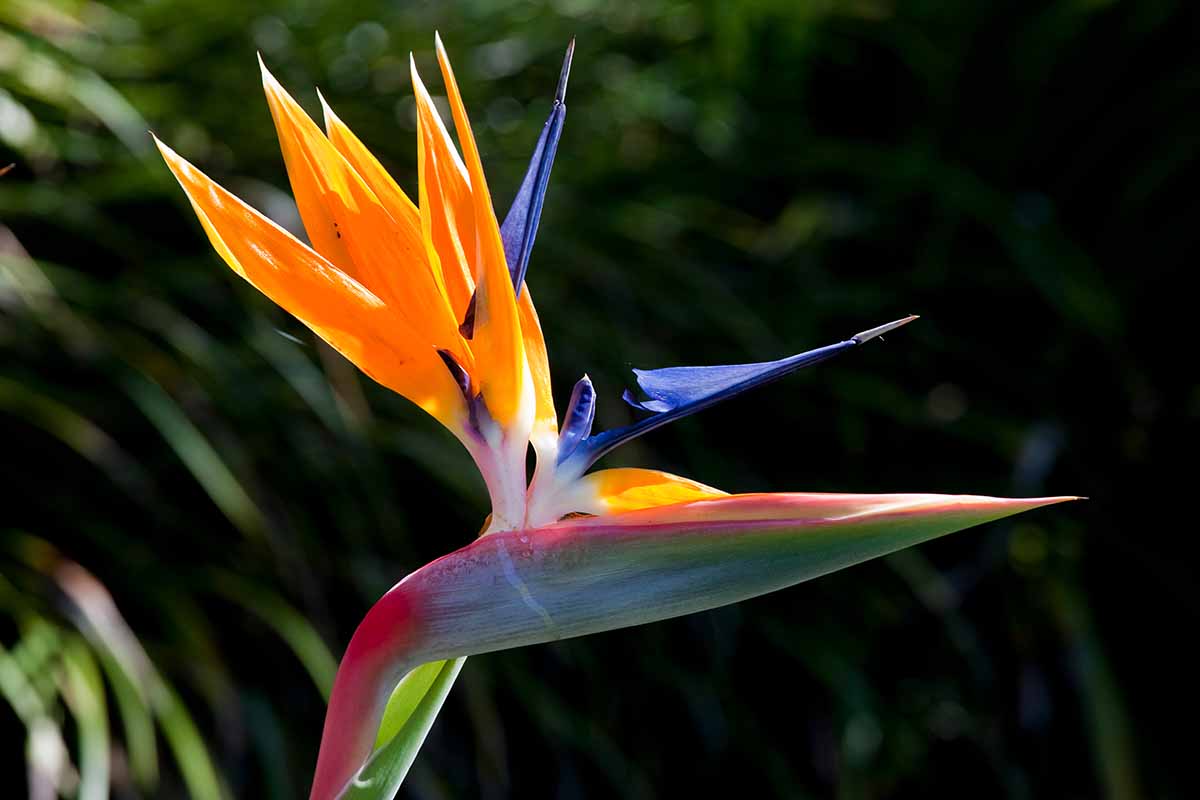
At any rate, you’ve added yet another ability to your Strelitzia skillset, so congratulations! May it serve you well for seasons to come.
Have any questions to ask or remarks to make about bird of paradise fertilization? The comments section is for you!
Interested in keeping your bird of paradise plants looking ship-shape? Here are some more Strelitzia maintenance guides:

